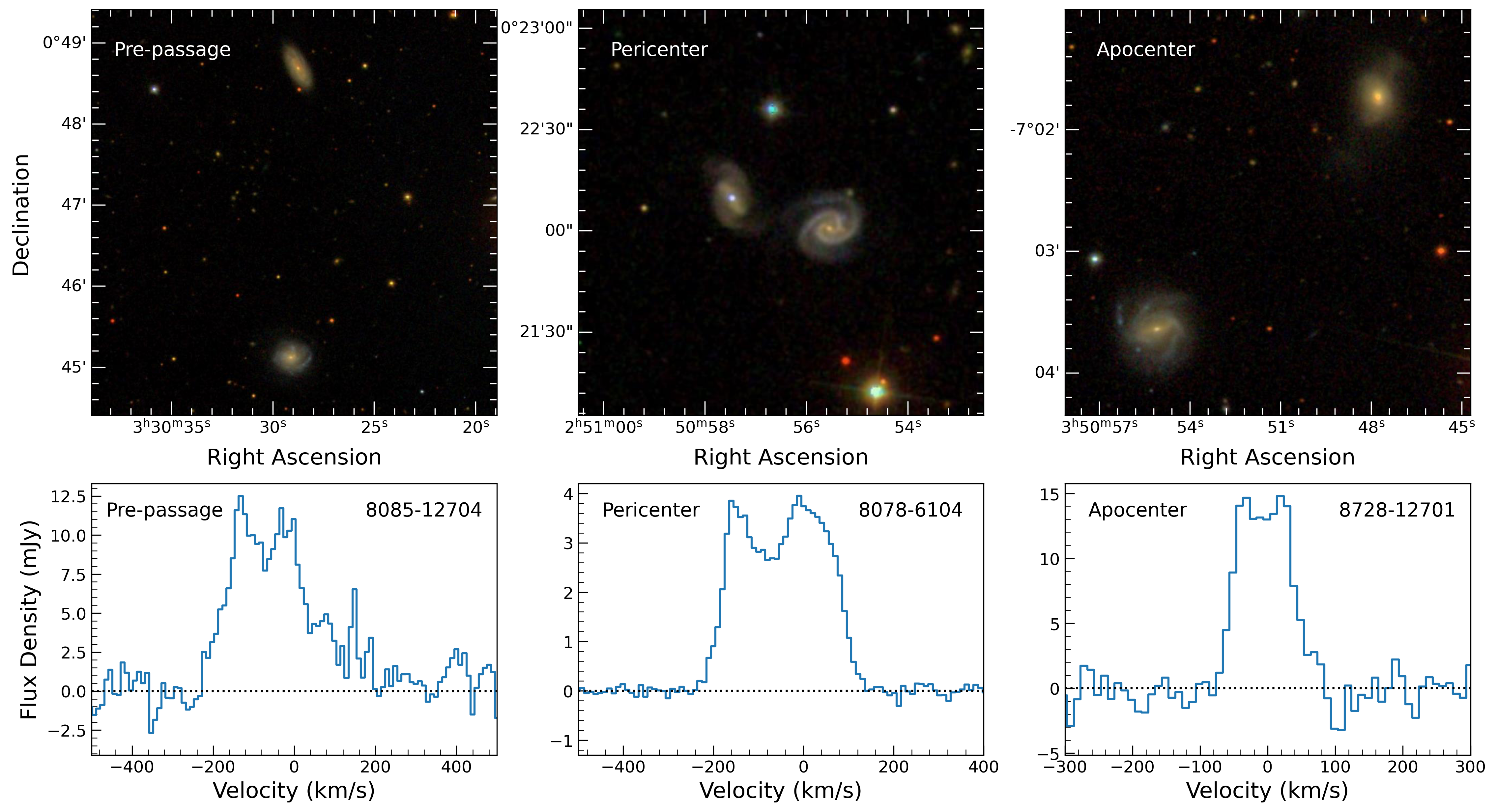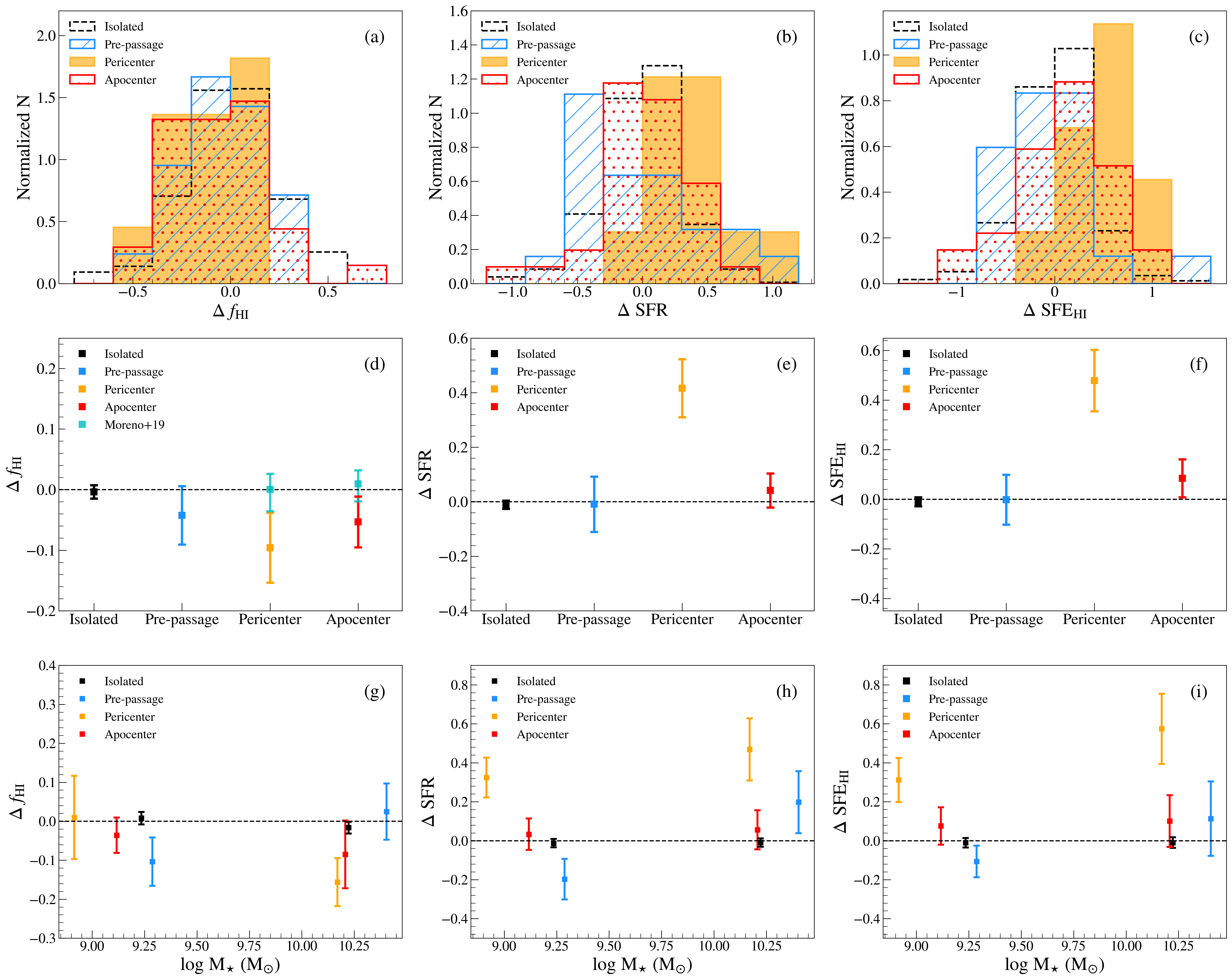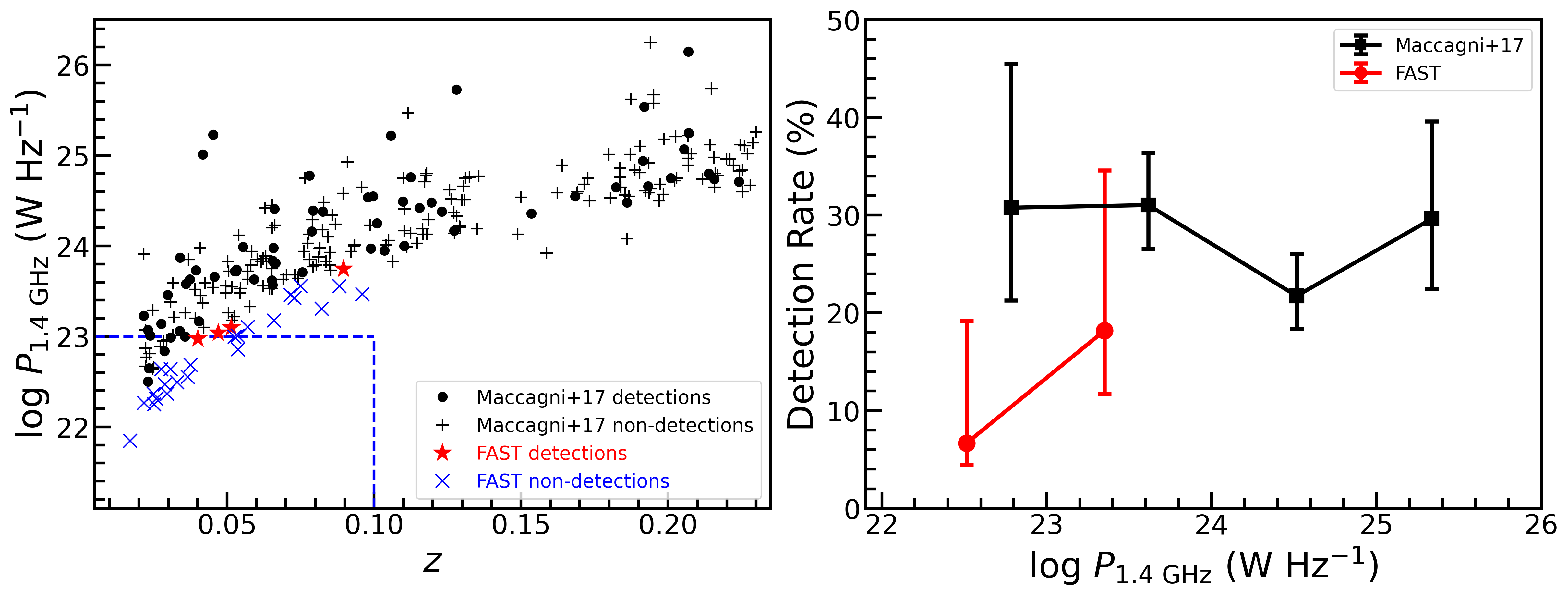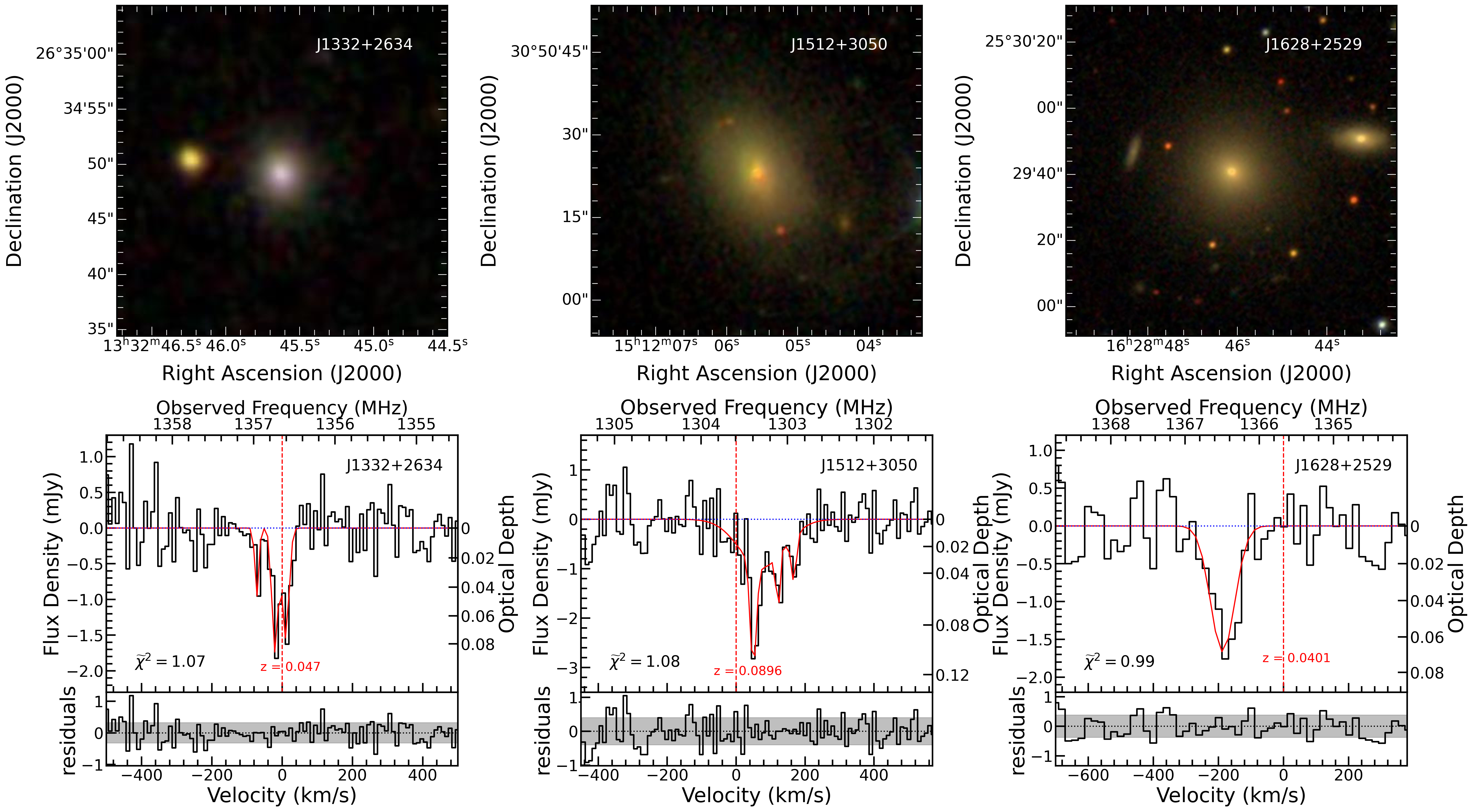HI Observations of MaNGA Major Merger Pairs
Link: Yu et al. 2022, ApJ, 934, 114

The role of HI content in galaxy interactions is still under debate. To study the HI content of galaxy pairs at different merging stages, we compile a sample of 66 major-merger galaxy pairs and 433 control galaxies from the SDSS-IV MaNGA IFU survey. In this study, we adopt kinematic asymmetry as a new effective indicator to describe the merging stage of galaxy pairs. With archival data from the HI-MaNGA survey and new observations from the Five-hundred-meter Aperture Spherical Radio Telescope (FAST), we investigate the differences in HI gas fraction ($f_{\text{HI}}$), star formation rate (SFR), and HI star formation efficiency ($\rm SFE_{\rm HI}$) between the pair and control samples. Our results suggest that the HI gas fraction of major-merger pairs on average is marginally decreased by $\sim 15\%$ relative to isolated galaxies, implying mild HI depletion during galaxy interactions. Compared to isolated galaxies, pre-passage paired galaxies have similar $f_{\text{HI}}$, SFR and $\rm SFE_{\rm HI}$, while pairs during pericentric passage have weakly decreased $f_{\text{HI}}$ ($-0.10\pm0.05$ dex), significantly enhanced SFR ($0.42\pm0.11$ dex) and $\rm SFE_{\rm HI}$ ($0.48\pm0.12$ dex). When approaching the apocenter, paired galaxies show marginally decreased $f_{\text{HI}}$ ($-0.05\pm0.04$ dex), comparable SFR ($0.04\pm0.06$ dex) and $\rm SFE_{\rm HI}$ ($0.08\pm0.08$ dex). We propose the marginally detected HI depletion may originate from the gas consumption in fuelling the enhanced $\rm H_2$ reservoir of galaxy pairs. In addition, new FAST observations also reveal an HI absorber ($N_{\rm HI} \sim 4.7 \times 10^{21} \text{ cm}^{-2}$), which may suggest gas infalling and the triggering of AGN activity.

HI Absorption in Low-power Radio AGNs Detected by FAST
Link: Yu et al. 2023, ApJ, 952, 144

We report the discovery of three HI absorbers toward low-power radio active galactic nuclei (AGNs) in a pilot HI absorption survey with the Five-hundred-meter Aperture Spherical radio Telescope (FAST). Compared to past studies, FAST observations have explored lower radio powers by ∼0.4 dex and detected these weakest absorbers at given redshifts. By comparing the gas properties and kinematics of sources along radio powers, we aim to explore the interplay between AGN and the surrounding interstellar medium (ISM). Compared to brighter sources at similar redshifts, our observations suggest a slightly lower detection rate of HI absorption lines (∼11.5%) in low-power radio AGNs with $\text{log}(P_{\text{1.4 GHz}}/\text{W Hz}^{-1})=21.8-23.7$. The low-power sources with $\text{log}(P_{\text{1.4 GHz}}/\text{W Hz}^{-1})<23$ have a lower detection rate of ∼6.7%. Due to the incompleteness of the sample, these detection rates may represent the lower limits. The selection of more extended sources and dilution by HI emission at lower redshifts may contribute to the lower detection rate of HI absorption lines. These detected absorbers present relatively narrow line widths and comparable column densities consistent with previous observations. One absorber has a symmetric profile with a large velocity offset, while the other two show asymmetric profiles that can be decomposed into multiple components, suggesting various possibilities of gas origins and kinematics. These HI absorbers may have connections with rotating disks, gas outflows, galactic gas clouds, gas fueling of the AGN, and jet-ISM interactions, which will be further investigated with the upcoming systematic survey and spatially resolved observations.

